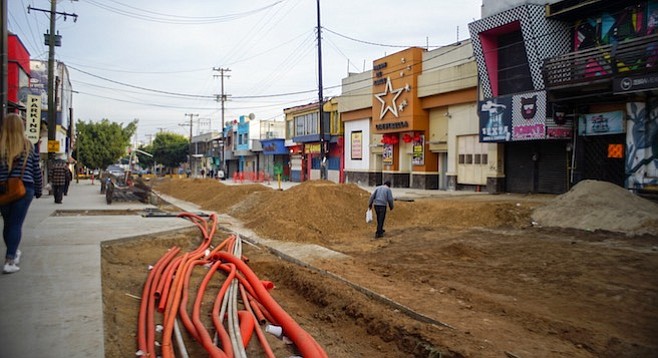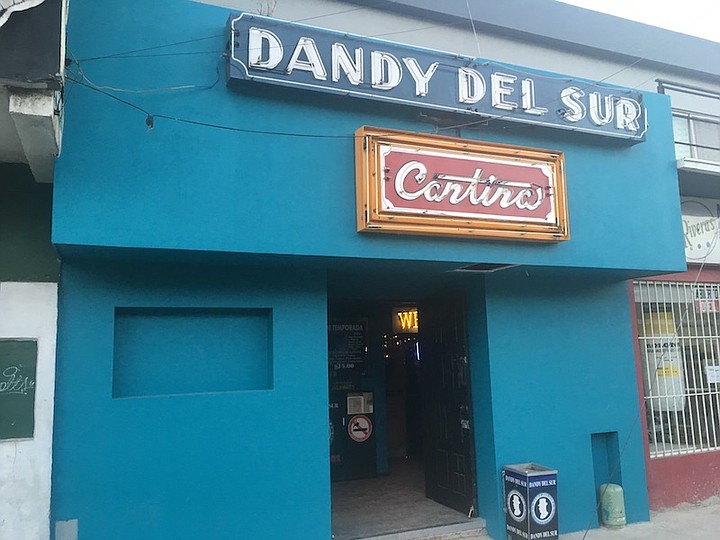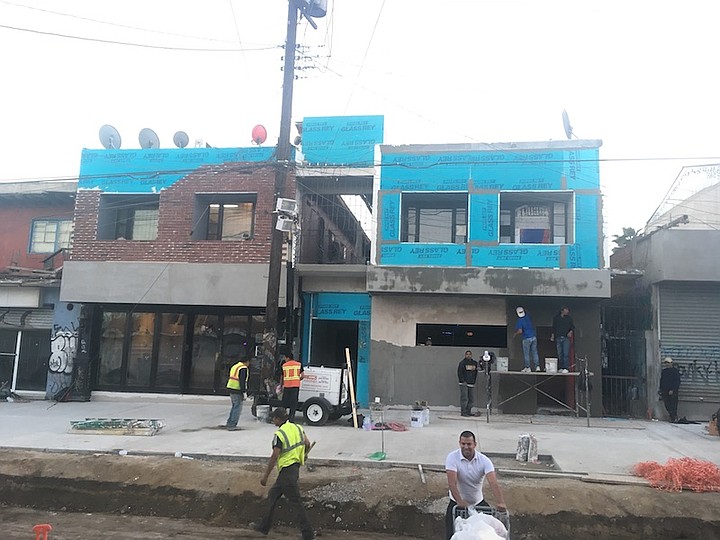 Facebook
Facebook
 X
X
 Instagram
Instagram
 TikTok
TikTok
 Youtube
Youtube

When the clock struck midnight on December 31st, Calle Sexta in Tijuana still resembled a war zone, with half-dug trenches and seemingly abandoned equipment. Partygoers didn’t seem to mind as they stumbled from bar to bar, crossing the trenches on wobbly wood planks.

In August of last year, work began on the street that is the exemplar of Tijuana’s nightlife, the corner of Sexta and “Revu,” aka Revolución. Avenida Revolución also got some cosmetic work done back in August (sidewalks were polished and some of the tiles were replaced).
On Calle Sexta, trenches were dug where the sidewalk meets the street for the undergrounding of wires. The trenches remain open, collecting cigarette butts and other garbage; no work has been done on them in months.

The project, budgeted at 21 million pesos (approximately $1.1 million), was supposed to be completed by the end of November, but it has been postponed to the end of February or March. The work on Calle Sexta includes the expansion of sidewalks, new street lights, and an overhaul of the businesses’ façades. Popular cantina Dandy Del Sur remodeled its outside appearance (to the dismay of those on social media), but the interior remains in the same well-worn style.
José Francisco Patiño, director of planning and promotion for the city’s tourism ministry, told Frontera that broken water pipes were to blame for the delay. According to Patiño, the pipes burst from a pressure surge that occurred while firefighters fought a blaze on October 23rd, two blocks away from Calle Sexta, in front of Caesar’s hotel.
As of now, Calle Sexta work seems to be halfway done. The crooked, hole-filled sidewalks have been expanded from 2 feet wide to up to 16 feet. And though plenty of holes still need repairs, people can also look forward to new streetlights on one of the city’s most heavily used pedestrian thoroughfares.
This is not the first time Tijuana has revamped a major downtown street. All of Calle Segunda was destroyed and replaced in a similar fashion in 2014. Four years later, the project was never been completed: new stop lights were supposed to change depending on the flow of traffic, but they are not. Crosswalk buttons in braille were installed, but pressing the button does nothing and the lights don’t make noise to inform the blind when to cross. The Calle Segunda sidewalk was completed before they removed wooden poles; after the poles were removed holes were left behind.


When the clock struck midnight on December 31st, Calle Sexta in Tijuana still resembled a war zone, with half-dug trenches and seemingly abandoned equipment. Partygoers didn’t seem to mind as they stumbled from bar to bar, crossing the trenches on wobbly wood planks.

In August of last year, work began on the street that is the exemplar of Tijuana’s nightlife, the corner of Sexta and “Revu,” aka Revolución. Avenida Revolución also got some cosmetic work done back in August (sidewalks were polished and some of the tiles were replaced).
On Calle Sexta, trenches were dug where the sidewalk meets the street for the undergrounding of wires. The trenches remain open, collecting cigarette butts and other garbage; no work has been done on them in months.

The project, budgeted at 21 million pesos (approximately $1.1 million), was supposed to be completed by the end of November, but it has been postponed to the end of February or March. The work on Calle Sexta includes the expansion of sidewalks, new street lights, and an overhaul of the businesses’ façades. Popular cantina Dandy Del Sur remodeled its outside appearance (to the dismay of those on social media), but the interior remains in the same well-worn style.
José Francisco Patiño, director of planning and promotion for the city’s tourism ministry, told Frontera that broken water pipes were to blame for the delay. According to Patiño, the pipes burst from a pressure surge that occurred while firefighters fought a blaze on October 23rd, two blocks away from Calle Sexta, in front of Caesar’s hotel.
As of now, Calle Sexta work seems to be halfway done. The crooked, hole-filled sidewalks have been expanded from 2 feet wide to up to 16 feet. And though plenty of holes still need repairs, people can also look forward to new streetlights on one of the city’s most heavily used pedestrian thoroughfares.
This is not the first time Tijuana has revamped a major downtown street. All of Calle Segunda was destroyed and replaced in a similar fashion in 2014. Four years later, the project was never been completed: new stop lights were supposed to change depending on the flow of traffic, but they are not. Crosswalk buttons in braille were installed, but pressing the button does nothing and the lights don’t make noise to inform the blind when to cross. The Calle Segunda sidewalk was completed before they removed wooden poles; after the poles were removed holes were left behind.
Comments